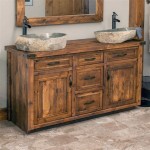Cost To Install Vinyl Flooring In Bathroom: A Comprehensive Guide
Vinyl flooring has become a popular choice for bathrooms due to its water resistance, durability, and aesthetic versatility. Understanding the costs associated with vinyl flooring installation in a bathroom is essential for budgeting and project planning. This article provides a comprehensive overview of the factors that influence the total cost, offering insights into material expenses, labor costs, and potential extra charges.
Vinyl flooring is available in several formats, each with varying advantages and price points. The three main types are sheet vinyl, vinyl tile, and vinyl plank. Sheet vinyl comes in large rolls, providing a seamless surface that minimizes water penetration. Vinyl tile is available in individual squares or rectangles, allowing for custom patterns and easier replacement of damaged tiles. Vinyl plank resembles hardwood flooring, offering a realistic wood look with the benefits of vinyl's water resistance. The choice of vinyl flooring type significantly impacts the material cost.
Material Costs: Exploring Vinyl Flooring Options
The cost of vinyl flooring materials varies depending on the type, quality, thickness, and design. Sheet vinyl is generally the most economical option, with prices ranging from $1 to $5 per square foot. Low-end sheet vinyl may lack durability and aesthetic appeal, while higher-end options often feature enhanced surface treatments and intricate patterns that increase both price and longevity. The wider the roll required to minimize seams, the higher the cost might be due to wastage.
Vinyl tiles typically range from $2 to $8 per square foot. Peel-and-stick tiles are the least expensive and easiest to install, but they may not be as durable as other options. Glue-down tiles require adhesive and a more meticulous installation process but offer greater stability and longevity. Interlocking vinyl tiles, also known as click-lock tiles, provide a floating floor system that simplifies installation and reduces the need for adhesives. These usually range a bit higher in price.
Luxury vinyl plank (LVP) and luxury vinyl tile (LVT) are at the higher end of the price spectrum, ranging from $3 to $10 or more per square foot. LVP and LVT offer realistic wood or stone visuals, often featuring embossed textures and multi-layer construction for added durability and dimensional stability. They are known for their resistance to scratches, dents, and water damage, making them well-suited for high-traffic bathrooms.
Beyond the cost of the vinyl flooring itself, additional materials contribute to the overall expense. These include underlayment, adhesive (if required), seam sealer (for sheet vinyl), and transition strips. Underlayment provides a smooth, even surface for the vinyl flooring, improving its performance and reducing noise transmission. The type of underlayment needed depends on the subfloor and the type of vinyl flooring chosen. Self-leveling compound might also be necessary if the existing subfloor is uneven.
Adhesive is essential for glue-down vinyl tiles and planks. The type of adhesive required depends on the manufacturer's recommendations and the subfloor material. Using the wrong adhesive can lead to bonding failures and costly repairs. Seam sealer is applied to the seams of sheet vinyl to create a watertight barrier, preventing water damage and mold growth. Transition strips are used to bridge the gap between the vinyl flooring and adjacent flooring materials, such as tile or carpet, providing a smooth and safe transition.
Baseboards and quarter-round molding are also frequently replaced or updated during a bathroom flooring renovation. These trim pieces conceal the edges of the vinyl flooring and provide a finished look. Material costs for these items can range from $1 to $3 per linear foot, depending on the material and style chosen. Paint to match the new flooring can also be considered an additional material cost.
Labor Costs: Hiring Professional Installers
The cost of labor to install vinyl flooring in a bathroom varies depending on the complexity of the installation, the size of the bathroom, and the installer's rates. Professional flooring installers typically charge by the square foot, with labor costs ranging from $1 to $5 per square foot, with a potential minimum job fee. More intricate installations, such as those involving complex patterns or challenging bathroom layouts, will generally command a higher labor rate.
Preparation of the subfloor is a crucial step in the vinyl flooring installation process, and it can significantly impact labor costs. If the subfloor is uneven, damaged, or contaminated, it must be repaired or replaced before the vinyl flooring can be installed. This may involve patching cracks, leveling the surface with self-leveling compound, or replacing sections of the subfloor entirely. Subfloor preparation can add several hundred dollars to the overall cost of the project.
Removal of the existing flooring is another factor that influences labor costs. Removing old tile or linoleum can be time-consuming and labor-intensive, especially if the flooring is firmly adhered to the subfloor. Some installers may charge an additional fee for removing and disposing of the old flooring. If asbestos is present in the old flooring, the removal process becomes more complicated and requires specialized handling by certified professionals, significantly increasing the cost.
Installing sheet vinyl typically requires more skill and precision than installing vinyl tiles or planks. Sheet vinyl must be carefully measured and cut to fit the bathroom's dimensions, and the seams must be properly sealed to prevent water damage. As a result, labor costs for sheet vinyl installation may be higher than for other types of vinyl flooring.
The complexity of the bathroom layout also affects labor costs. Bathrooms with numerous fixtures, such as toilets, sinks, and bathtubs, require more intricate cutting and fitting of the vinyl flooring. Installers may charge extra for working around these obstacles. Small, awkwardly shaped bathrooms can also increase labor time, leading to higher installation costs.
Obtaining multiple quotes from different flooring installers is recommended to ensure a competitive price. Be sure to ask for detailed breakdowns of the labor costs, including charges for subfloor preparation, removal of old flooring, and installation of transition strips and baseboards. Checking references and reviewing online reviews can help ensure that you are hiring a qualified and reputable installer.
Additional Costs: Factors Impacting the Final Price
Several additional costs can impact the final price of a vinyl flooring installation project. These include the cost of moving furniture, disposal fees for old flooring, and permit fees (if required by local regulations). Moving furniture out of the bathroom before the installation can require significant time and effort. Some installers may offer furniture moving services for an additional fee, or you may need to hire movers separately.
Disposal fees for old flooring can vary depending on the type of flooring and the local regulations. Some municipalities offer free disposal of construction debris, while others charge a fee per bag or dumpster load. Be sure to factor in these disposal fees when budgeting for the project.
In some areas, a permit may be required for flooring installations, especially if the project involves significant modifications to the subfloor or plumbing. Check with your local building department to determine if a permit is necessary and what the associated fees are. Failing to obtain a required permit can result in fines and delays.
Unexpected problems, such as hidden water damage or structural issues, can also increase the cost of the project. If water damage is discovered during the removal of the old flooring, it must be repaired before the new vinyl flooring can be installed. This may involve replacing damaged subfloor or wall studs, which can add significantly to the overall cost. Similarly, if structural issues are uncovered, they must be addressed to ensure the stability and safety of the bathroom.
The quality of the vinyl flooring materials and the expertise of the installer can also affect the long-term cost of the project. Using low-quality materials or hiring an inexperienced installer may result in premature wear and tear, requiring early replacement or repairs. Investing in high-quality materials and hiring a qualified installer can help ensure a durable and long-lasting vinyl flooring installation.
Ultimately, the cost to install vinyl flooring in a bathroom is influenced by a combination of material costs, labor costs, and additional expenses. Careful planning, thorough research, and obtaining multiple quotes can help homeowners stay within their budget and achieve a beautiful and functional bathroom floor.

Average Cost Of Vinyl Flooring Installation In 2024 Forbes Home

Fixr Com Cost To Install Vinyl Flooring

How Much Does It Cost To Install Vinyl Flooring Homeserve Usa

Cost To Install Vinyl Plank Flooring A Complete Guide 2024 Forbes Home

How Much Does It Cost To Install Vinyl Plank Flooring

Fixr Com Cost To Install Vinyl Flooring

Vinyl Flooring Cost 2024 List Fitting Per Sqm

Cost To Install Vinyl Floors The Home Depot

Cost To Install Vinyl Floors The Home Depot

How Much Does It Cost To Install Bathroom Flooring World Wide Carpets
Related Posts







